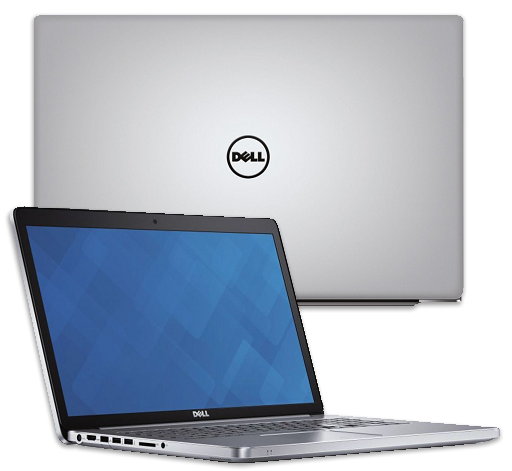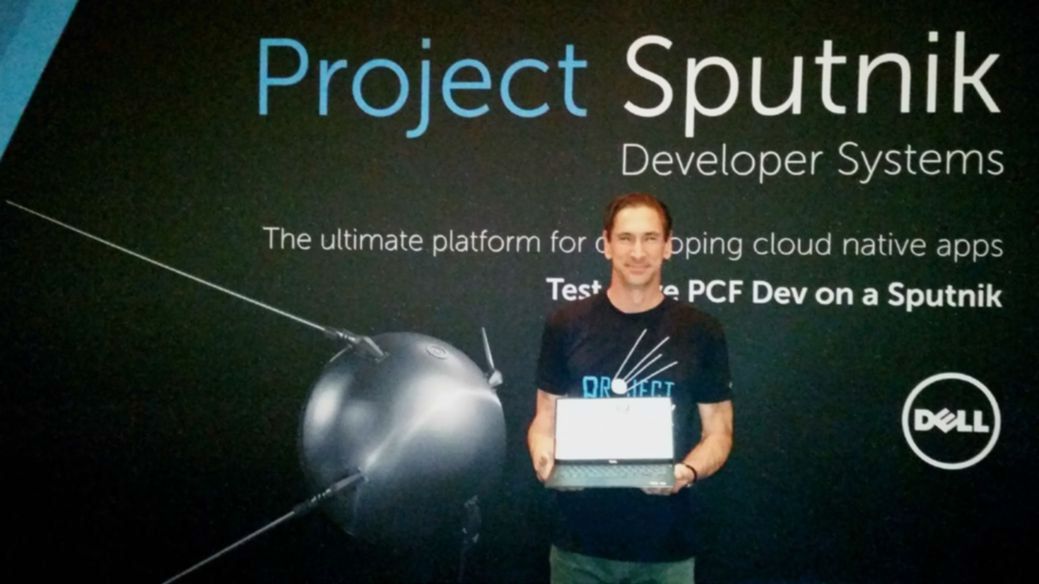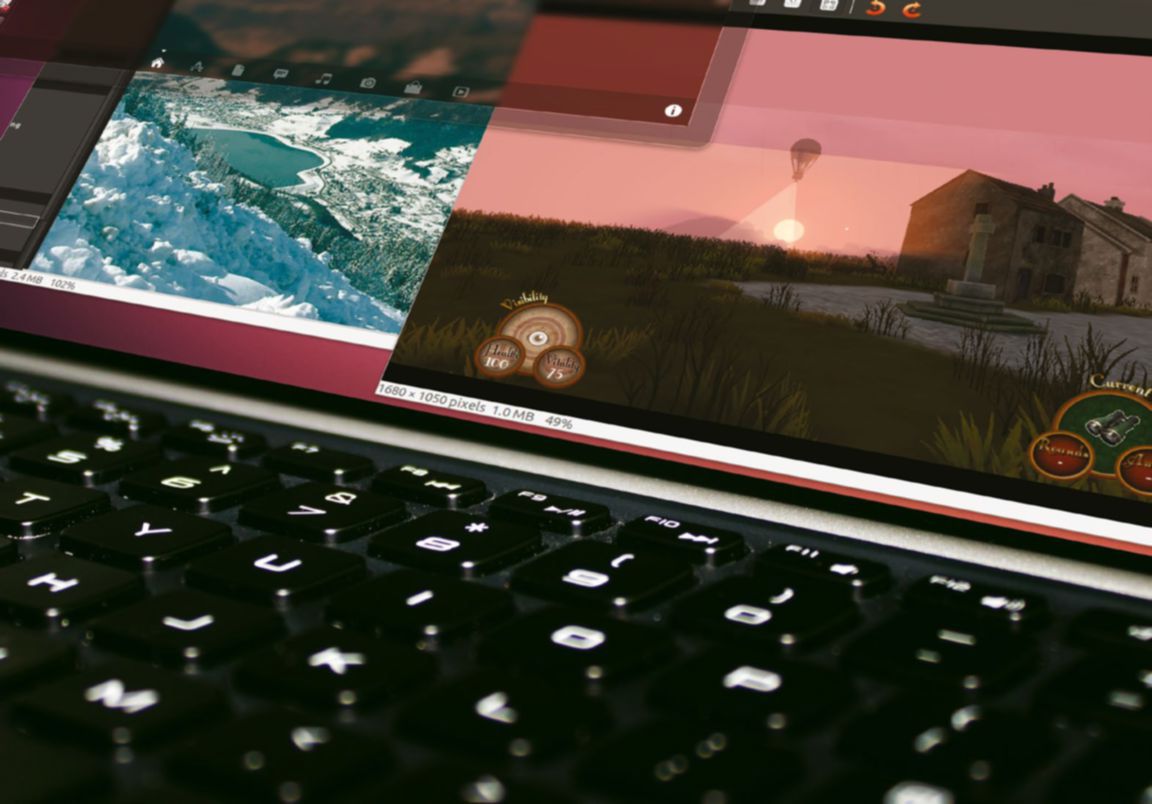LAUNCHING LINUX LAPTOPS
Linux laptops – Four years on and Dell’s dedicated and highly-focused line of Linux laptops continue to sell strongly, Stuart Burns looks back at their development and forward into 2017 and beyond.
The whole juggernaut that is now Linux on Dell started as the brainchild of two core individuals, Barton George (Senior Principal Engineer) and Jared Dominguez (OS Architect and Linux Engineer).
It was their vision that began it all back in 2012. It was long hours, uncertain futures and sheer belief that people really did want Linux laptops that sustained them. Here is the untold story of how Dell gained the top spot in pre-installed Linux on laptops.

Table of Contents
Where do you start when no one has ever really even touched such a concept? The duo did have some experience of the area before.
George explained that the XPS and M3800 Linux developer’s laptops weren’t Dell’s first foray into Linux laptops. Those with long memories may remember Dell testing the waters for a brief while by having a Linux offering alongside Windows laptops. By their own admission it didn’t work out. “We misread the market” commented George.
This first attempt at Linux on laptops failed mainly because most non-technical users were blinded by the cheap price and didn’t understand what they were actually buying.
Dell found itself with purchasers who thought that they had scored an incredibly cheap laptop only to hit the inevitable question: “Where the heck has Windows gone?” which was generally followed by costly support issues and potential returns for the company.
The other unfortunate side effect was that by appealing to users with low-end hardware the experience was less than impressive even for those knowledgeable in Linux.
Thankfully Dell decided to give Linux on laptops a second attempt thanks to George and Dominguez’s internal lobbying efforts. It isn’t a well-known fact but Dell has an internal skunkworks project where tiny projects can pitch ideas and get official Dell support.
Proving you can’t keep a good operating system down George and Dominguez bid for funds in the Dell projects forum to produce a quality alternative to OS X and Windows. It was a tense wait to see if they had done enough to get the blessing of the skunkworks.
Thankfully, the project scored a green light. However, the struggle was only just beginning as they had a comparatively miniscule budget of $40,000 and just six months to prove that not only could they build a compelling Linux on

Barton George, founder and lead of Project Sputnik, Dell’s Linux Ultrabook project.
laptops offering but that Dell could turn it into a viable product and make money off of it.
Learning how not to create Linux laptops from the first time was helpful but there where some major differences with the new project. The first one being that they needed to nail their market and it was a crucial concern given their previous failure to find the right one.
Linux laptops: Know your market
In order to make sure they had the right ideas and concepts they jumped on a plane bound for the West Coast and landed in California to speak to several “very large web shops” that the pair declined to name.
What made the trip that bit more awkward for them was the fact that the Dell duo could only show some prototypes of a laptop that they “may sorta perhaps” have coming to market. No guarantees, no promises.
Universally the reception was ‘Get back to us when you have the real product but we sure are interested.’ This was positive news because the pair knew that these were the type of companies that could purchase many units and make the project financially viable.
This time the duo had the right initial market. It was big, commercial web-scale operators and their developers who were crying out for a fully supported Linux laptop.
Back from their successful trip, the duo realised that the project would never see the light of day without big support from someone with gravitas championing its cause. Fortunately, they didn’t have to look far. In this instance, they had Michael Dell’s executive assistant as their champion: Aside from Mr Dell himself they were unlikely to top that, so the team felt confident their backs were covered, but now needed to deliver on their promises:
“They can provide the air cover but you need to work hard on the ground” was George’s take on the situation and when it came to the hardware they had to make sure it was a good offering and more importantly worked well with Linux. Cost was almost secondary to making sure the product worked and was popular with their big clients they had met previously who had loved the idea.
The first offerings needed to be both priced attractively and be fairly configurable given that it had to appeal to a range of users. The XPS was seen as the obvious choice given its quality, expandability and popularity.
The first XPS Linux offering (Gen1 circa 2012) was a single configuration built and offered up to the world. It couldn’t be found on Dell’s website, though. The initial notice of availability was given via George’s personal website. He also noted that it was most
ON THE STAFF RESPONSE – In typical geek fashion people started to donate time and resources for free.
definitely a beta product and all the baggage that the tag brought with it.
George recalled how in a typical week his blog would average 1,500 hits a day. When the XPS development station was mentioned views skyrocketed to a peak over several weeks of 9,000 views a day. Not epic, but a good start.
Requests for beta testers (who had to commit to purchasing their own units. This was no freebie) rolled in left right and centre, eventually totalling over 6,000 requests to be included in the program, which quickly proved that the idea of Linux on Dell laptop had a viable and, importantly, profitable future.
Internally, word got around about this cool new project that was going on. In typical geek fashion people started to donate time and resources for free (well, on Dell’s dime technically but no one was counting). A few lucky individuals, including Dominguez, were permanently borrowed for third line Linux server support, never to return as bigger endeavors beckoned.
Power users and developers know that RAM is king when trying to develop and perform debugging. While the Gen 1 XPS was all good the screen was a bit small for some and the amount of RAM that could be installed was a little limiting.
One of Dominguez’s first off-the-hip moves was to get a larger, more powerful Developers Edition laptop for those they had courted earlier that same year. An M3800 notebook got the Linux makeover for those developers that wanted performance over size. Fortunately, both machines shared the same peripherals, trackpads etc.
Just as things seemed to be coming together the project narrowly avoided a near fatal cancellation. No one saw it coming but in late 2012 Dell was looking to save money as times where proving hard after the global recession of 2008. Everyone and every project was fair game to be scaled down or closed to help the bottom line. The Linux on laptops project just weeks from release was a plump and juicy target for some and George and Dominguez weren’t even sure if the project would ever see the commercial light of day. They carried on anyway, half expecting to be told to stop, the dream is over. Sleepless nights plagued the project. Luckily, the team dodged the cost-cutting bullet but as Dominguez reflected on the feeling at the time: “If anything it was a call to get this puppy out the door as quickly as possible.”
From Dell’s point of view it was a high-risk, high-reward scenario: a market with no other big players and plump for the taking. There still had to be accountability in terms of costs and deliverables however: “Our original idea of having several configurations per device wasn’t feasible so we narrowed it down to just one device with one configuration to streamline our focus,” explains George. “Slowly but surely we’ve been able to build out our portfolio and are now pleased to offer four different Precision models.”
This meant a slowly but surely approach with limited but well-configured systems available as multiple configurations cost development time, money and resources.
Linux laptops: Project Sputnik
Around the same time as the project was gathering momentum a chance meeting with Mark Shuttleworth – who happened to be in the Dell offices discussing Ubuntu – spawned Project Sputnik, a collaboration with Canonical to create a Linux Ultrabook running Ubuntu. The project was so named due to the fact that Shuttleworth was the second-ever private space visitor. It’s perhaps not common knowledge that when Shuttleworth went into space it was actually on a Soyuz platform. However, Soyuz just doesn’t sound as sexy as Sputnik. Ego played its part and the name stuck adding a certain ‘cool’ vibe to the burgeoning Linux on Dell project.
Building alliances with the right people was key to getting the project out there and people talking about it. As FOSS people know marketing money talks and there usually isn’t much of that in Open Source. On a more positive note, Project Sputnik gave the Linux

Barton George (pictured) and Jared Dominguez realised that to make a Dell laptop running Linux successful it needed to appeal to developers.
team at Dell a way to get their message out. They ended up working the conference circuit alongside Ubuntu and getting speaker spots at FOSSCONN and other Libre software events. The project was gaining exposure by this point and the dream of an out-of-the-box Linux laptop that ‘just worked’ was becoming a reality. The projects exposure also made it much harder for Dell to change its mind.
This back story also laid the foundations for the expansion of the Dell Linux laptop range. While still not the company’s bread and butter, it’s obvious the people at Dell have worked hard and there is now a whole micro-site dedicated to Linux laptops including Developer laptops, Education laptops and mainstream laptops. Purchasers are no longer required to spend more than a comparative MacBook to get a solid out-of-the-box Linux experience.
The latest range of Dell laptops are based on Kaby Lake CPUs and thankfully now come with several configurable options such as storage and RAM, which is a far cry from the original Gen 1 model and its one configuration — US buyers even get a choice of colours other than laptop grey and black.
Dell’s support for the Linux is also now more solidified. Support is provided for the latest LTS (Long Term Support) release of Ubuntu, which is currently 16.04 and supported until 2021.
From the outset, the Linux project was a project of the people by the people. George was at pains to stress that wherever possible
Linux laptops: DELL LINUX TIMELINE
Project Sputnik
Early May 2012
Initial announcement of the project
Mid November 2012
Beta invitations close and the XPS 13-inch Linux Developer Edition goes live.
Precisions were added within six months due to customer demand.
Feb 2015
Linux Development 15-inch M3800 Developer Edition released.
Early April 2015
A revised M3800 is released alongside a 4th gen XPS laptop.
March 2016
Fifth-gen XPS released alongside new Precision workstations.
End March 2016
Dell XPS 13 5th generation (with Skylake CPU) is |aunched.
April 2016
Ubuntu 16.04 LTS becomes a supported operating system.
Early Oct 2016
XPS 13 gen 6 with Kaby Lake processor launched. Now ships with Ubuntu 16.04 LTS as default.
they strongly encourage and persuade the vendors they work with to not only support Linux but to open-source the drivers where possible so that non-Dell users and organisations can also benefit.
Open source drivers have, as we all know, been probably the biggest issue for Linux users. The hope is that with Dell’s successful foray into Linux laptops, it will be able to encourage more component vendors to provide open source drivers with the prospect of juicy financial carrot rather than a stick.
Not every thing is perfect now, however. It
THE GOAL OF SPUTNIK – Our goal is to continue to provide a first class Linux- based developer laptop.
doesn’t take much investigation to discover that lots of people have issues with the infamous trackpad on the XPS range. We asked the Linux team about this and it transpires that the issue stems from the fact that Dell deliberate decided to provide consistency across the range and ensure that Ubuntu Linux worked out the box across any model of Dell laptop. There is actually a highly optimised driver for the XPS and the M3800 model specifically for Ubuntu but it needs to be enabled by the user. You must actually enable the Cypress touchpad to get a more refined, precision touchpad that Microsoft Windows users get. It’s in the settings now and the issue was fixed in kernel release 3.1.9.
Linux laptops: First-class Linux
One thing we were really keen to know was how the project was perceived within Dell. In the past, Microsoft has had a somewhat contentious relationship with OEM vendors who have wished to provide alternative choices to Windows. Most OEMs wouldn’t dare defy Microsoft and jeopardise truckloads of marketing money and pre-load agreements with various antivirus companies, add-on software and games companies.
In fact, while researching Linux laptops LXF has even been told directly by one very large vendor that they ‘Don’t do Linux laptops and never will because they don’t get the preload revenue from it’. More market share left for Dell. We’re sure Dell doesn’t mind one bit.
For the XPS Linux team at Dell this hasn’t been a huge issue, largely because to advance their cause the developers have learnt to be a little more savvy. The Linux team has held their own and avoided getting into any large-scale arguments with vested parties within the company-killing them with kindness essentially. In fact, ‘Do something and be truthful’ was one of the mantras the Linux team has held themselves to.
So who buys these top-end Linux laptops? Dell’s approach has been to hook the developers, which, in turn, has reeled in other tech-savvy users. In fact, the team say a lot of people are now buying Dell laptops, even with Windows on occasion, because it’s now known that Dell has an extremely compelling Linux offering that a user can investigate later and even go down the dual-boot between Windows and Linux, if they so wish: “In making these systems easily available and bundled with Dell ProSupport, we’re recognising that these are first-class users,” Dominguez told us. “It’s no longer just about Windows versus Linux.”

For Dell at least that $40,000 gamble has paid off and contributes a not insignificant amount of profit to Dell’s balance sheet. Surprisingly, however, no other manufacturer has attempted to enter this market in a serious way: “As we drive the Sputnik programme forward we will continue to solicit customer input to help steer our efforts,” George told us. “With regards to specific new technologies we will work with the respective vendors and Canonical to enable them for use with our developer systems and in turn the overall Linux ecosystem-Our overall goal is to continue to provide a first class Linux-based developer laptop.” Time will tell if other mainstream manufacturers will follow Dell into the premium Linux laptop market. One thing is for certain, if they do, they will have a hard time trying to find individuals, like George and Dominguez, who believe in what they are doing and have the aptitude and belief to carry it out.